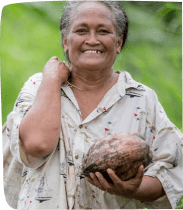Upcoming rains and aid cuts could further hamper humanitarian efforts and push millions of people to famine
As Sudan’s conflict enters its third year, massive displacement and fighting are spilling over into neighbouring countries, worsening the already catastrophic humanitarian crisis. The looming rainy season, combined with aid cuts by the US and other key donors, will severely hamper humanitarian efforts putting millions of lives at risk, a new Oxfam report warned today.
Sudan’s brutal conflict has created the world’s largest humanitarian crisis. More than 12.7 million people —nearly one-third of the population— have been forced to flee their homes, including 3.7 million to neighbouring countries. One in two Sudanese is hungry. Five areas in the country are already experiencing famine, and nearly eight million more people are at risk of starvation.
The upcoming rains could turn roads to mud, and trigger the collapse of vital bridges, cutting off entire areas and communities from essential aid and services. This period coincides with the annual lean season when food insecurity already peaks.
The Oxfam report –The Unravelling of the World’s Largest Humanitarian Disaster: From the Sahel to the Red Sea – published jointly with humanitarian organisations responding to the Sudan crisis, highlights the staggering human cost of the Sudan conflict. It warns that the crisis is now spilling over neighbouring South Sudan and Chad, where humanitarian needs are already dire.
Fati N’Zi-Hassane, Oxfam in Africa Director, said:
“We are already witnessing clashes between armed groups from South Sudan and Sudan. This volatile situation is simmering like a volcano ready to erupt any minute. Unless the fighting stops and the humanitarian crisis is addressed, the situation could quickly turn into a full-blown regional catastrophe.”
Two of the host countries, South Sudan and Chad, are already among the world’s poorest countries. They grapple with ongoing conflict, food insecurity, and climate shocks, leaving them ill-equipped to manage the crisis.
In South Sudan, the arrival of people fleeing Sudan’s conflict has put more pressure on already scarce resources, which is deepening local tensions and threatening the fragile peace South Sudan has struggled to maintain.
Nadia, a mother of five-year-old son Ismail who fled and is now sheltering in Renk, South Sudan, after soldiers killed her husband and two children says: “The war took everything. We left with nothing but the clothes on our backs. Here, we are safe from bullets, but there is no food, we are dying of hunger.”
The report also found that 17 million children in Sudan are out of school, while 65 percent of refugee children in Chad lack access to education — heightening risks of child labour, marriage, trafficking, and recruitment by armed groups.
For the first time in the history of modern humanitarian response, a single country –Sudan – reaches over 30 million people in need of humanitarian assistance. Yet, despite the rapidly worsening humanitarian crisis, international support is falling severely short. Only 10 percent of this year’s UN appeal for Sudan has been met to date.
The recent suspension of approximately $64 million USAID funding for Chad and South Sudan in 2025 has also dealt a severe blow to lifesaving efforts. In 2024, the U.S. was the largest donor to both countries.
“Turning a blind eye to this crisis would not only be a profound political and moral failure, but a failure of our core humanity. Without immediate injection of funds, millions of people will simply die of starvation or disease,” added N’Zi-Hassane.
The report urges all warring parties to halt fighting and prioritize diplomacy, in order to forge an immediate and lasting ceasefire.
Note to editors
Read “The Unravelling of the World’s Largest Humanitarian Disaster: From the Sahel to the Red Sea”. The report is jointly endorsed by Sudan and South Sudan Forum, Inter Agency Working group (IAWG) for East and central Africa and Forum des ONG en Afrique de l’Ouest et centrale (FONGI)
Oxfam is supporting 150,000 people fleeing the conflict to Renk, South Sudan, and has reached 94,562 refugees in the Eastern part of Chad with lifesaving clean water, hygiene facilities and cash.
Sudan currently accounts for 1 in 8 internally displaced persons (IDPs) worldwide and 1 in 13 refugees globally, making it the world’s largest displacement crisis.
Sudan war has left 4.8 million people across neighbouring countries (Egypt, Libya, South Sudan, Chad, Ethiopia and Uganda) in urgent need of humanitarian assistance. This is up from 1.8 million in mid-2023, more than the double.
Despite funding needs, only a third of the Regional Refugee Response Plan was met last year.
In South Sudan, the number of people needing assistance has more than doubled over the past decade—from 4.1 million in 2015 to 9 million in 2025 while in Chad, one in three people – about 7 million people need assistance in 2025.
The UN appeal for Sudan Humanitarian Response Plan for 2025 was US$ 434.5 million. Only 10 percent of this amount has been funded according to the UNOCHA Financial Tracking Service portal.
Approximately $64 million USAID funding for Chad and South Sudan in 2025 has been cut. Source: The Center for Global Development.
In December 2024, the Famine Review Committee (FRC) classified a Famine (IPC Phase 5) in five areas in Sudan: Zamzam, Abu Shouk and Al Salam camps in Al Fasher locality and in the Western Nuba Mountains. It also projected that Famine would expand to five additional areas by May 2025.
CONTACT
Spokespeople are available for interviews. For more information, contact:
Rachel Schaevitz at [email protected]





